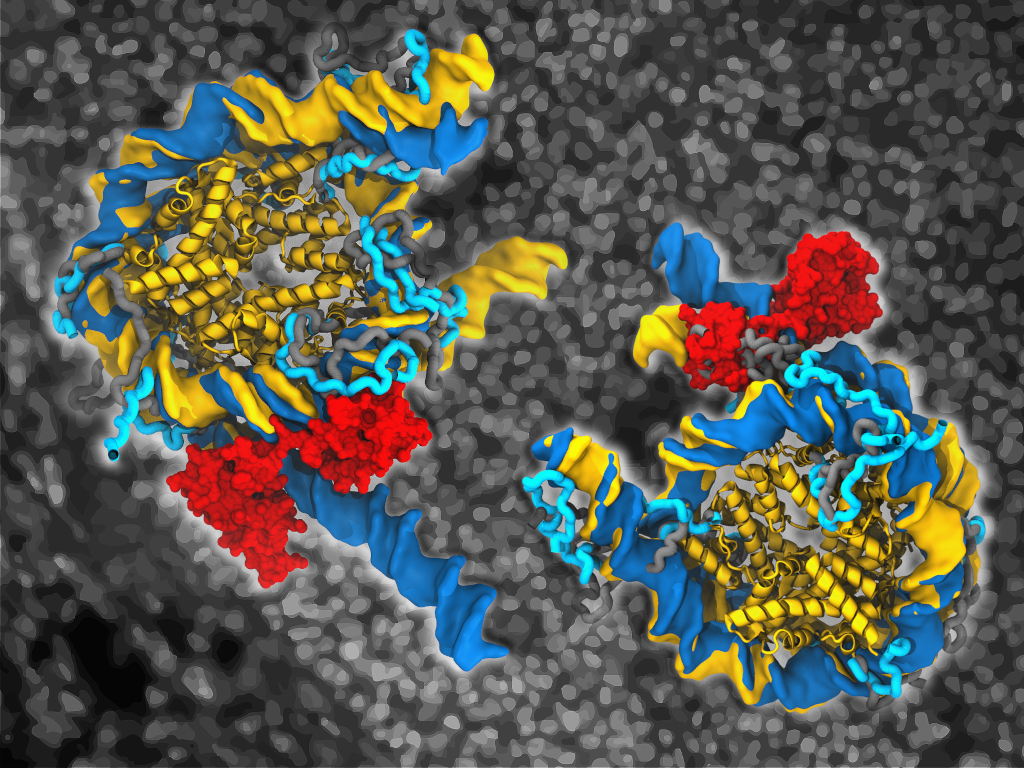Computer simulations visualize how stem cell protein opens wrapped DNA
A key protein for converting adult stem cells into cells that resemble embryonic stem cells has been visualized in unprecedented detail by an international team of researchers. By combing experiments and computer simulations, the team visualized how the Oct4 protein binds and opens short pieces of DNA while wrapped around nuclear storage proteins (histones), just like in our genome. The team was led by Vlad Cojocaru from the University of Utrecht (the Netherlands) and the Babeş-Bolyai University of Cluj-Napoca (Romania) and Hans Schöler from the Max Planck Institute for Molecular Biomedicine in Münster (Germany). The researchers publish their results in the journal Nucleic Acids Research on 22 September 22.
Publication:
OCT4 interprets and enhances nucleosome flexibility
Caitlin M MacCarthy, Jan Huertas, Claudia Ortmeier, Hermann vom Bruch, Daisylyn Senna Tan, Deike Reinke, Astrid Sander, Tim Bergbrede, Ralf Jauch, Hans R Schöler, Vlad Cojocaru
Nuclei Acids Research, 22 September 2022.
DOI: 10.1093/nar/gkac755
Image: Native genomic nucleosomes bound (dark blue) by Oct4 (red) and in free form (yellow). The surfaces and ribbons illustrate the DNA and the core structured regions of the histones respectively. Oct4 stabilizes a partially open form of one nucleosome (on the right) and induces a large opening in the other (on the left). Oct4’s impact on the structures of these nucleosomes depends on the mobility of the flexible histone tails (gray and light blue in free and Oct4-bound nucleosomes respectively) and of its two subdomains (red) that bind to different faces of DNA. The background shows colonies of human induced pluripotent cells cultured on feeder cells (lower left corner) and derived from human skin cells by the induction of the indispensable Oct4 and three other proteins. The pictures were created with VMD (http://www.ks.uiuc.edu/Research/vmd/) by Vlad Cojocaru and the background image was kindly provided by Sergiy Velychko (MPI Münster).
